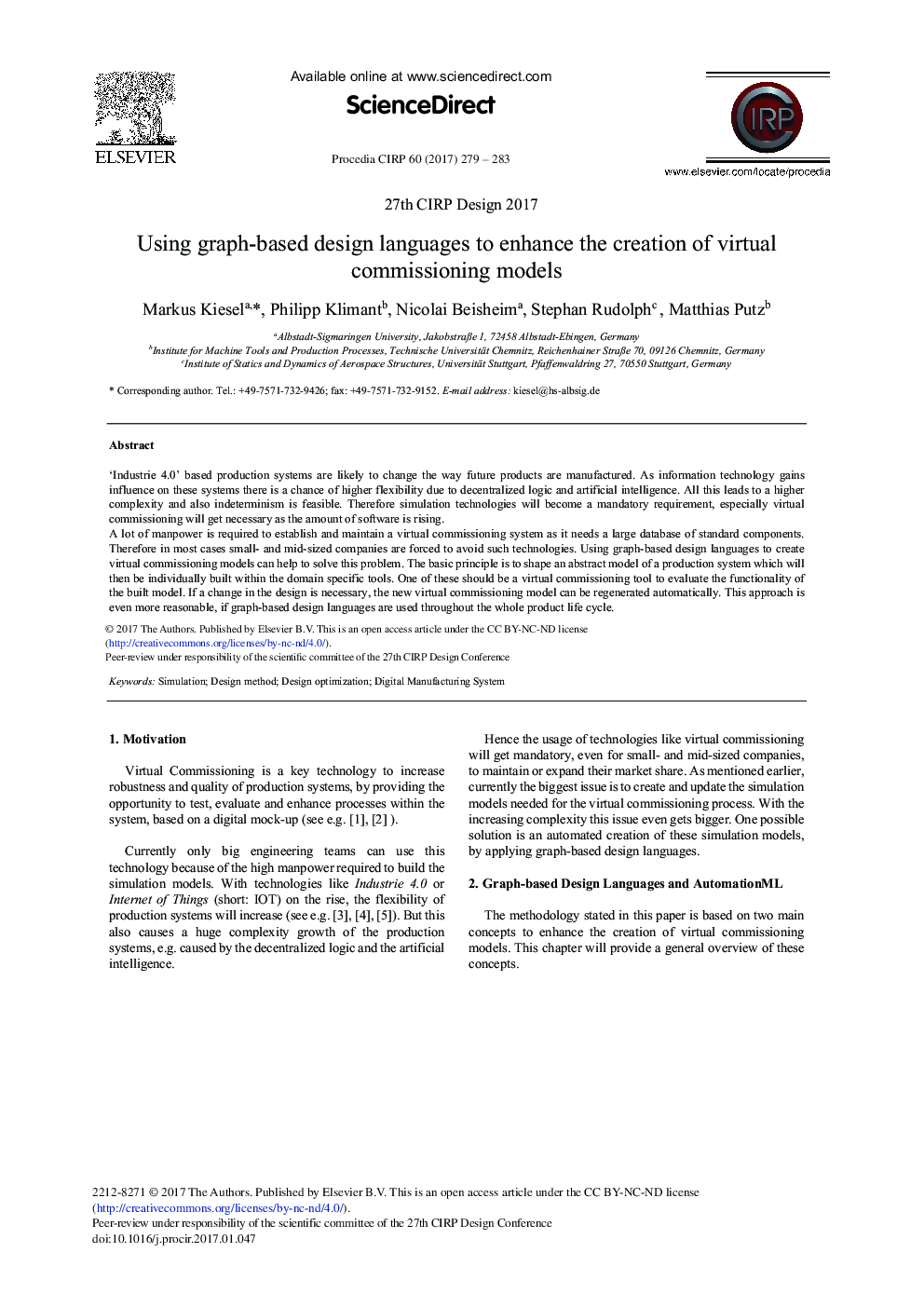| Article ID | Journal | Published Year | Pages | File Type |
|---|---|---|---|---|
| 5470621 | Procedia CIRP | 2017 | 5 Pages |
Abstract
A lot of manpower is required to establish and maintain a virtual commissioning system as it needs a large database of standard components. Therefore in most cases small- and mid-sized companies are forced to avoid such technologies. Using graph-based design languages to create virtual commissioning models can help to solve this problem. The basic principle is to shape an abstract model of a production system which will then be individually built within the domain specific tools. One of these should be a virtual commissioning tool to evaluate the functionality of the built model. If a change in the design is necessary, the new virtual commissioning model can be regenerated automatically. This approach is even more reasonable, if graph-based design languages are used throughout the whole product life cycle.
Related Topics
Physical Sciences and Engineering
Engineering
Industrial and Manufacturing Engineering
Authors
Markus Kiesel, Philipp Klimant, Nicolai Beisheim, Stephan Rudolph, Matthias Putz,
